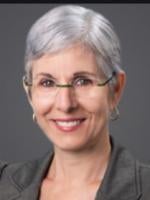On February 7, 2022, the California legislature passed legislation reviving COVID-19 supplemental paid sick leave (SPSL). The law creates new California Labor Code Section 248.6 and takes effect ten days after Governor Newsom signs the legislation, which we expect is imminent. It applies to all employers with 26 or more employees and will be retroactive to January 1, 2022. The provision is set to expire on September 30, 2022.
Reasons Employees May Use Supplemental Paid Sick Leave
Employees may use California SPSL for any of the following reasons:
-
The employee is subject to an isolation or quarantine period as defined by the California Department of Public Health (CDPH), the U.S. Centers for Disease Control and Prevention (CDC), or a local public health officer.
-
A health care provider has advised the employee to isolate or quarantine.
-
The employee is attending an appointment for the employee or the employee’s family member to receive a COVID-19 vaccine or booster shot.
-
The employee is experiencing, or taking care of a family member who is experiencing, symptoms relating to the COVID-19 vaccine or booster shot.
-
The employee is experiencing COVID-19 symptoms and is seeking a medical diagnosis.
-
The employee is caring for a family member who is subject to an isolation or quarantine period as defined by the CDPH, the CDC, or a local public health officer or whom a health care provider has advised to isolate or quarantine.
-
The employee is caring for a child whose school is closed or place of care is closed or otherwise unavailable for reasons related to COVID-19 on the premises.
Family Members
For purposes of SPSL, “family member” means parent, child, spouse, registered domestic partner, grandparent, grandchild, and sibling.
Amount of Leave
Full-time employees receive 40 hours of California SPSL. If an employee has a regular schedule but is not employed full time, the employee is entitled to the number of hours that the employee regularly works in one week. Employees who work variable hours are subject to a different formula.
Additional Leave
Full-time employees may receive up to 40 hours of additional California SPSL for themselves if they test positive for COVID-19 and cannot telework. If the employer requires the employee to do so, the employee must take a second diagnostic test on or after the fifth day after the employee took the test that showed the employee tested positive. The employer must pay for the test.
Employees also may take additional leave for caring for a family member if the employee provides a positive test result for the employee’s family member.
Vaccination Leave
An employer may limit the amount of SPSL an employee uses to get a vaccine or vaccine booster shot and to recover from symptoms to 24 hours unless a health care provider confirms that the employee or family member continues to experience symptoms related to a COVID-19 vaccine or booster shot.
Request for Leave
An employer must make SPSL available for immediate use upon an employee’s oral or written request. The employee may decide how many hours of SPSL to use. An employer may not require the employee to use any other paid or unpaid time off (including paid time off (PTO) or vacation time) before allowing the employee to use SPSL.
Rate of Pay
Employers are obligated to pay up to $51l per day or up to $5,100 in the aggregate.
Notice
The law requires that the California Division of Labor Standards Enforcement (DLSE) prepare a notice that employers must post in the workplace. The employer may email the notice to employees who do not visit the workplace on a regular basis.
Important Differences from Previous California Supplemental Paid Sick Leave Law
The new SPSL law is different from the previous SPSL law in at least two important ways:
-
The employer may not apply SPSL to exclusion pay required by the California Division of Occupational Safety and Health’s (Cal/OSHA) Emergency Temporary Standards (ETS). Under the ETS, employers must provide employees with exclusion pay if they test positive for COVID-19 because of work or come into close contact with a positive case during the infectious period at work.
-
An employee’s pay stub must show the amount of SPSL that the employee has used. Under the previous SPSL law, the employer was required to show the amount of SPSL the employee had available.





 />i
/>i

